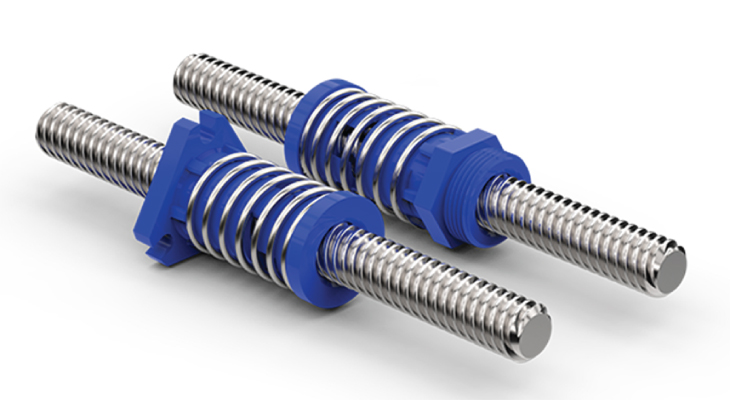The Diverse Lead Screw Thread Forms and Options Available for You!

The screw thread of a lead screw or Acme screw—the helical shape used to convert rotational motion to linear motion or force—is an essential factor in engineering and configuring a mechanical actuator that will perform optimally for a specific linear motion application.
The type of screw thread—the unique combination of form, class, size, and specifications—indicated for your particular application is dependent on its lead, the linear distance the nut travels in one revolution, and the direction, size, and nature of loads. In most cases, the lead of a screw thread is selected to produce sufficient friction to maintain linear motion—so that the screw doesn’t slip under load. However, understanding how screw threads can be configured, including screw materials, and how unique configurations will function under different loading conditions is critical to matching the right screw thread for your application. A description of the four main types of screw thread forms and options follows.
Four Major Thread Form Families
1. Acme Thread Form
The Acme thread form is the original trapezoidal screw thread developed in the late 1800s. It has a 29° thread angle with a thread height half of the pitch, the distance between a point on one thread, and a corresponding point on the following thread parallel to the axis. The apex and valley of the thread are flat. The three main classes of Acme thread forms are general-purpose, centralizing, and Stub Acme. Compared to general-purpose thread forms, centralizing threads are manufactured with tighter tolerances and reduced clearance on the major thread diameter. Stub Acme threads follow the same basic design but have a thread depth of less than one-half the pitch.
2. Trapezoidal Thread Form
The trapezoidal thread form—now commonly available in metric sizes— has a 30° thread angle and offers greater strength for large loads. Helix Linear Technologies offers precision lead screw assemblies with a trapezoidal thread form that has a 40° thread angle. There are also standard variations of trapezoidal screws, such as multiple-start threads, left-hand turning threads, and self-centering threads.
3. Screw Thread Form
The screw thread form is primarily used for large diameter lead screws with a 60º thread angle.
4. Specialty Thread Form
The specialty thread form encompasses custom-engineered screw threads configured for unique applications and non-standard forms, such as American Worm, Module Worm, Modified Buttress, Straight Knurling, and Diamond Knurling.
Critical Measurements of Screw Thread Sizes
When considering various screw thread forms for your applications, it’s essential to keep in mind the critical measurements of screw thread sizes, which include:
The major diameter of external thread – The diameter of an imaginary cylinder that touches the crest of the external thread.
The minor diameter of external thread – The diameter of an imaginary cylinder that touches the root of the external thread.
The major diameter of internal thread – The diameter of an imaginary cylinder that touches the root of the internal thread.
The minor diameter of internal thread – The diameter of an imaginary cylinder that touches the crest of the internal thread.
Screw Thread Materials
Another factor to consider when evaluating the appropriate screw thread for your lead screw or Acme screw application is the material of the screw itself. Screws are typically manufactured from the following materials:
- Carbon Steels
- Alloy Steels
- Alloy Heat-Treated Steels
- Stainless Steel
- Aluminum
- Titanium
- Various Exotic Metals and Alloys
Consult Helix Linear Technologies to Determine the Right Lead Screw Thread for You
Design engineers who have screw thread questions or need a screw thread form that isn’t standard, contact Helix Linear Technologies. Whatever screw thread configuration you need, HELIX can walk you through the process of specializing a screw thread that best fits your particular application.
To learn more about screw threads, manufacturing options, and our capabilities get in touch with our application engineers.


